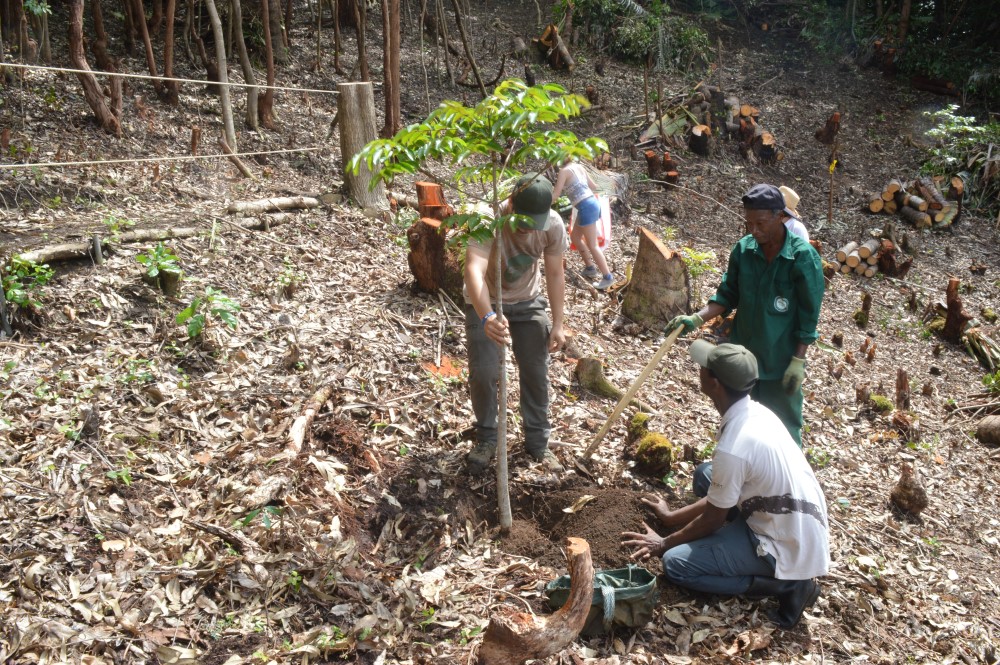How to Restore Degraded Forest Ecosystems
Forest ecosystems are vital to the planet, providing habitat for biodiversity, regulating climate, and supporting human livelihoods. However, these ecosystems are under threat from deforestation, climate change, and unsustainable practices. 
Forest degradation refers to the decline in the quality and function of a forest, which can lead to reduced biodiversity, soil erosion, and impaired water cycles.
Causes of Forest Degradation
Understanding the causes of forest degradation is essential for effective restoration. Common causes include:
- Deforestation: The conversion of forest land to agriculture, urban development, or other non-forest uses.
- Unsustainable Logging: Harvesting timber at rates faster than the forest can regenerate.
- Climate Change: Altered weather patterns and increased temperatures that stress forest ecosystems.
- Pollution: Contamination from industrial activities that damage soil and water quality.
- Invasive Species: Non-native species that outcompete native flora and fauna.
Planning for Restoration
Restoring degraded forests requires careful planning and a deep understanding of the local ecosystem. The following steps are crucial for a successful restoration project:
Assessing the Site
Begin by conducting a thorough assessment of the degraded area. This includes:
- Baseline Surveys: Documenting existing vegetation, soil conditions, and wildlife.
- Historical Analysis: Understanding the past conditions and uses of the land.
- Stakeholder Engagement: Involving local communities, governments, and NGOs to gather insights and secure support.
Setting Objectives
Clear, measurable objectives are essential for guiding restoration efforts. Objectives might include:
- Increasing Biodiversity: Restoring native plant and animal species.
- Improving Soil Health: Reducing erosion and increasing soil fertility.
- Enhancing Water Quality: Stabilizing water cycles and reducing runoff.
- Boosting Carbon Sequestration: Increasing the forest's capacity to absorb and store carbon dioxide.
Restoration Techniques
Various techniques can be employed to restore degraded forest ecosystems, depending on the specific context and goals. Here are some common methods:
Natural Regeneration
Allowing the forest to regenerate naturally is often the most cost-effective method. This involves:
- Protecting the Area: Fencing off the site to prevent grazing and human disturbance.
- Promoting Seed Dispersal: Encouraging natural processes that spread seeds, such as wind, water, and animals.
- Controlling Invasive Species: Removing or managing non-native species that hinder natural regeneration.
Assisted Regeneration
In some cases, natural regeneration needs a helping hand. Techniques include:
- Enrichment Planting: Introducing native tree species to boost diversity and accelerate growth.
- Soil Amendment: Adding organic matter or nutrients to improve soil quality.
- Hydrological Restoration: Rehabilitating water sources and wetlands to support forest recovery.
Reforestation
When natural or assisted regeneration is not sufficient, reforestation might be necessary. This involves:
- Selecting Species: Choosing tree species that are native, resilient, and suited to the local environment.
- Planting Techniques: Using appropriate planting methods to ensure high survival rates, such as spacing, depth, and protection measures.
- Maintenance and Monitoring: Regularly caring for planted trees and tracking their growth and health.
Long-Term Sustainability
Restoration is not a one-time effort; it requires ongoing commitment to ensure long-term success. Key factors include:
Community Involvement
Engaging local communities in restoration projects ensures sustainability by:
- Providing Employment: Creating jobs in planting, maintenance, and monitoring.
- Building Capacity: Educating and training locals in sustainable forest management practices.
- Fostering Stewardship: Encouraging a sense of ownership and responsibility for the restored forest.
Policy and Governance
Supportive policies and strong governance frameworks are critical for sustaining restoration efforts. This involves:
- Legal Protection: Enacting laws to protect restored areas from future degradation.
- Incentives: Offering financial incentives for conservation activities, such as payments for ecosystem services.
- Collaboration: Promoting cooperation between government agencies, NGOs, and private sector partners.
Monitoring and Adaptation
Continuous monitoring and adaptive management are essential for addressing challenges and ensuring progress. This includes:
- Regular Assessments: Conducting periodic surveys to evaluate the health and growth of the restored forest.
- Adaptive Management: Adjusting strategies and techniques based on monitoring results and emerging knowledge.
- Research and Innovation: Supporting research to develop new methods and technologies for forest restoration.
Conclusion
Restoring degraded forest ecosystems is a complex but achievable goal that requires careful planning, appropriate techniques, and sustained effort. By understanding the causes of degradation, setting clear objectives, employing effective restoration methods, and ensuring long-term sustainability, we can revive these vital ecosystems. Such efforts not only benefit the environment but also support local communities and contribute to global climate goals.
Sources
- Food and Agriculture Organization of the United Nations (FAO) - Forest Restoration
- World Wildlife Fund (WWF) - Forests
- Global Forest Watch
- International Union for Conservation of Nature (IUCN) - Forest Landscape Restoration
- United Nations Environment Programme (UNEP) - Forest Restoration
- Society for Ecological Restoration (SER) - Forest Restoration
- The Nature Conservancy - Forest Restoration
- Reforestation Hub
- Forest Stewardship Council (FSC) - Forest Restoration
- World Resources Institute (WRI) - Global Forest Watch










































